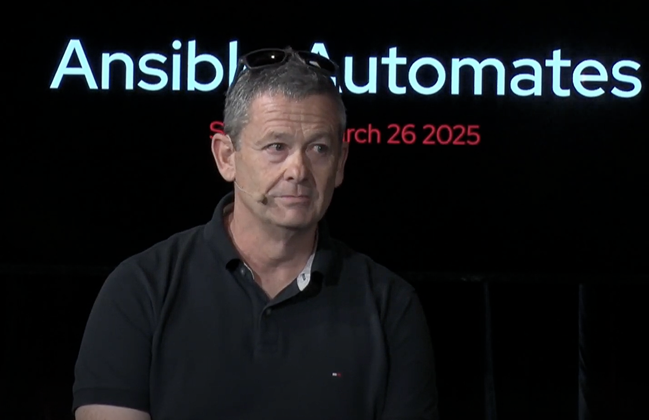Westpac is embracing event-driven automation and AIOps as part of a multi-year infrastructure automation program underpinned by Ansible.

Patterns automation service owner Sean Dudding told a Red Hat Ansible event in Sydney earlier this year that the bank is shifting gears in its “journey”.
“To date, Westpac's infrastructure automation journey has focused on optimising the environment, removing manual effort, and reducing human risk,” Dudding said in the presentation, which has only recently been published.
“Going forward, we're focused on delivering automation that will transform the environment and improve the customer journey.”
Dudding said that infrastructure automation was intended to help internal teams and projects spin up, secure and manage IT resources, hosting workloads that ultimately benefitted “millions of the bank's customers across Australia.”
Earlier in the program, the bank used AWX, a free, open-source controller for managing and executing Ansible automation tasks.
It has since transitioned to the enterprise-supported version of this — Red Hat Ansible Automation Platform or AAP.
“AWX is great," Dudding said. "The fact that Red Hat provides it as part of the open source community, allowing anyone from a home developer to an enterprise to use it free of charge, is great."
“Understandably, Red Hat were very keen to bring Westpac on the AAP journey, and while the upstream version [AWX] was meeting a lot of our requirements, ultimately, 24/7 support is critical to delivering it to our customers should we need to call on it.
“Since making the decision to go to AAP, there have been several other additional benefits we've seen.
"First, we work closely with Red Hat to allow Westpac engineers to attend training sessions on content which we require.
“The next one is that we built an engineering connection with Red Hat, allowing our teams to fast-track solutions by talking directly to their counterparts within Red Hat, and this connection covers all of the Red Hat products we purchase, not just AAP.
“Additionally, we have an influence on the product roadmap, so Westpac can help drive the future product roadmap for AAP and the other Red Hat products.
“For example, we recently requested an uplift for the event-driven automation engine to enable a change to event streams, allowing us to deliver a highly available automated platform.
“So, the decision to move from AWX to AAP was driven not only by support provided, but those less tangible benefits created by the sharing of knowledge and engineering collaboration between Westpac and Red Hat.”
Red Hat automation sales specialist Tertius Bouwer said the vendor had met with Westpac “many times over the years” to raise the prospect of moving to the commercially supported version.
Bouwer said the bank had achieved “very mature end-to-end automation with AWX”, but that AAP became attractive to fulfil a planned evolution of infrastructure automation at Westpac.
In particular, Bouwer highlighted the closer ties between the two organisations.
“That partnership was, I think, a big gain for us in that conversation,” Bouwer said.
Dudding said that AAP is hosted “on Red Hat OpenShift with an instance in each of our data centres”, with cross-site load balancing in place.
He noted that implementing event-driven automation and AIOps are now priority areas for the bank.
“Event-driven automation will allow us to monitor trusted event sources, triggering automation when specific events occur,” Dudding said.
“Often, the automated task will be something the engineers have already developed, improving our return on investment.
“AIOps is evolving rapidly, enabling us to trigger automated processes across the environment using AI, reducing the risk of outages and improving services to our customers.”


_(20).jpg&h=140&w=231&c=1&s=0)


_(22).jpg&h=140&w=231&c=1&s=0)



_(26).jpg&w=100&c=1&s=0)

 iTnews Executive Retreat - Security Leaders Edition
iTnews Executive Retreat - Security Leaders Edition












_(1).jpg&h=140&w=231&c=1&s=0)



